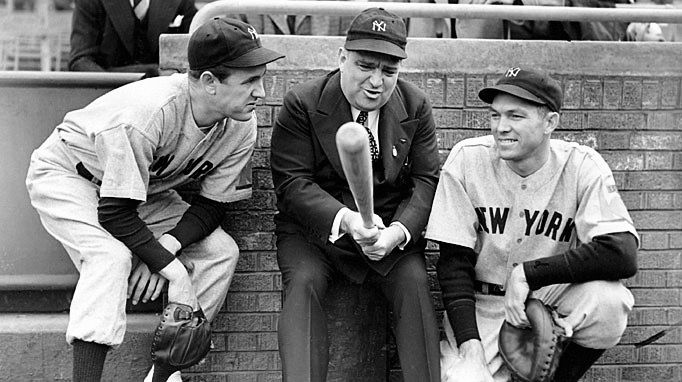When a Pele Soccer store opened in Times Square earlier this month, it did so in the old Embassy I Theater. Located on part of the first floor of the Actors’ Equity Building at 1560 Broadway, the space has been barren since the Times Square Visitors Center decamped in June 2014.
So why the long vacancy? Well, the 17-story office building it populates, for one, has been under renovation. In an effort to add more retail capacity to the first floor, GFP Real Estate, the landlord, moved the building’s main entrance from heavily trafficked Broadway to more subdued West 46th Street. In the process, 1560 Broadway was also connected to the Express store in the I. Miller Building next door. But the real reason was probably a proposed change to the Embassy itself.
Back in July 2013, GFP figured the basement of the building had “potential for retail leasing” too, so it planned to install a downstairs escalator in the lobby of the theater. That would obliterate the lobby, so the Landmarks Committee of Community Board 5 rejected the proposal. It also rejected GFP’s second try in October 2013. Only after Carlton Architects, Pele’s design team, promised to “respect the space” and drop the landlord’s idea, did Community Board 5 finally give its blessing to a new tenant.
But why did Pele have to get its plan past the Board anyway? Simple: The Landmarks Preservation Commission [LPC] bestowed an interior landmark on the Embassy in 1987. Any modification to the premises is now subject to public review.
The space itself was once intended for a men’s clothier, but Metro-Goldwyn-Mayer [MGM] bought it in 1925 and had Thomas Lamb (1871-1942) repurpose it as a 598-seat movie house. Remarkably, MGM chose Gloria Gould Bishop, the 19-year-old granddaughter of industrialist Jay Gould, as proprietress. What made her unique was that she only hired women: women projectionists, women ushers, women ticket-takers, and women musicians. Her reason? Well, as she explained to Boston American [July 30, 1925], women “were more efficient then men.”
For its grand debut — August 26, 1925 — the Embassy opened like this:
But Ms. Gould’s dream of cultivating a movie house for high-class “society people” died in just four years. Struggling to turn a profit, MGM discharged the Embassy to FOX. On November 2, 1929, however, FOX began showing something less upper crust than first-run movies and suddenly revived the theater. It became the first house in America to feature newsreels around the clock with something accompanying them called “sound.” Twenty years, later, after stints as the “Embassy Newsreel Theater” and “Embassy Pathe News Theater,” it boasted over 11 million tickets sold. But the popularity of newsreels was fading, and on November 18, 1949, the Embassy reverted to screening first-run films.
In 1987, when the LPC called to consider its landmarking, the theater presented like this:
Originally, its chairs were covered in tapestry, their arms lacquered in carmine, and backs lacquered in black and gold. However, by the time of the LPC’s photo, those elegant chairs had been replaced with the likes of “unremarkable red seats.”
Later, in 2013, while playing host to the Times Square Visitors Center, the Embassy could be seen stripped of its seats altogether:
But let’s just target a section of the auditorium, somewhere we can do our “Now and Then” discretely. How about here?
Well, if you were here in 1925, you’d be center row three. To your right you’d find an orchestra pit, four-foot stage with stairs on either side, drapes, a proscenium, and then the projection screen. In front you’d see a three-manual M.P. Moller Pipe Organ, silk damask curtains arranged between two rectangular piers, and a crystal lantern hanging before one of Arthur Crip’s murals. The artist made eight Baroque-inspired scenes for the theater, and the two that flanked the proscenium (including the one shown here) were particularly special: They were free-hanging screens that camouflaged the Moller’s assortment of pipes behind them.
From the same spot today, though, this is your view:
The seats and the Moller are gone, of course, as is Mr. Crisp’s mural. (Thankfully, six others remain.) But you can still catch sight of things that made the Embassy an interior landmark.
See the dark oval in that rectangular pier on the right? It’s made of marble and each pier in the auditorium still bares one. In fact, each oval was originally fashioned from “a different color and type of marble.” Above the oval there’s a floral relief. Today it’s painted cream, but the Rambusch Decorating Studio first bathed it in a “deep carmine with gold accents.”
At the top of the pier, you’ll notice a mermaid relief giving rise to a “gilded, vase-like” lighting fixture. Each light sprouts a gilded arch capped with some “grotesque head.” According to the LPC’s designation report, “a gilded Hermes” once projected from several of these around the auditorium too.
Between the two lights, you’ll spot a final wonder: the remnants of floral and oyster shell accents emerging from the plain of an arched wood valence. They all look tawny and sapless today but, remember, the Rambusch company once dabbed them in gold.
Thankfully what remains still fires the imagination.
Views of the former Embassy I Auditorium. All images retouched by Rick Stachura.
(1) Photo by Unknown. Courtesy of cinematreasures.org. Circa 1925.
(2) Photo by Forster. Courtesy of the LPC’s Designation Report. Circa 1987.
(3) Photo by Ken Roe. Courtesy of cinematreasures.org. June 12, 2013.
(4) Photo by Unknown. Wall to the left of the front row seats. Courtesy of cinematreasures.org. August 26, 1925.
(5) Photo by Rick Stachura. Wall to the left of the front row seats. November 21, 2019.





